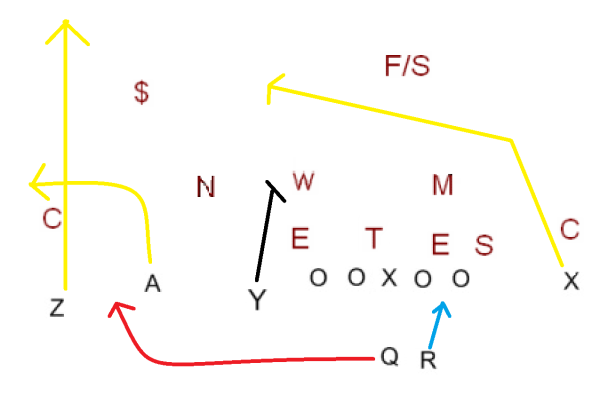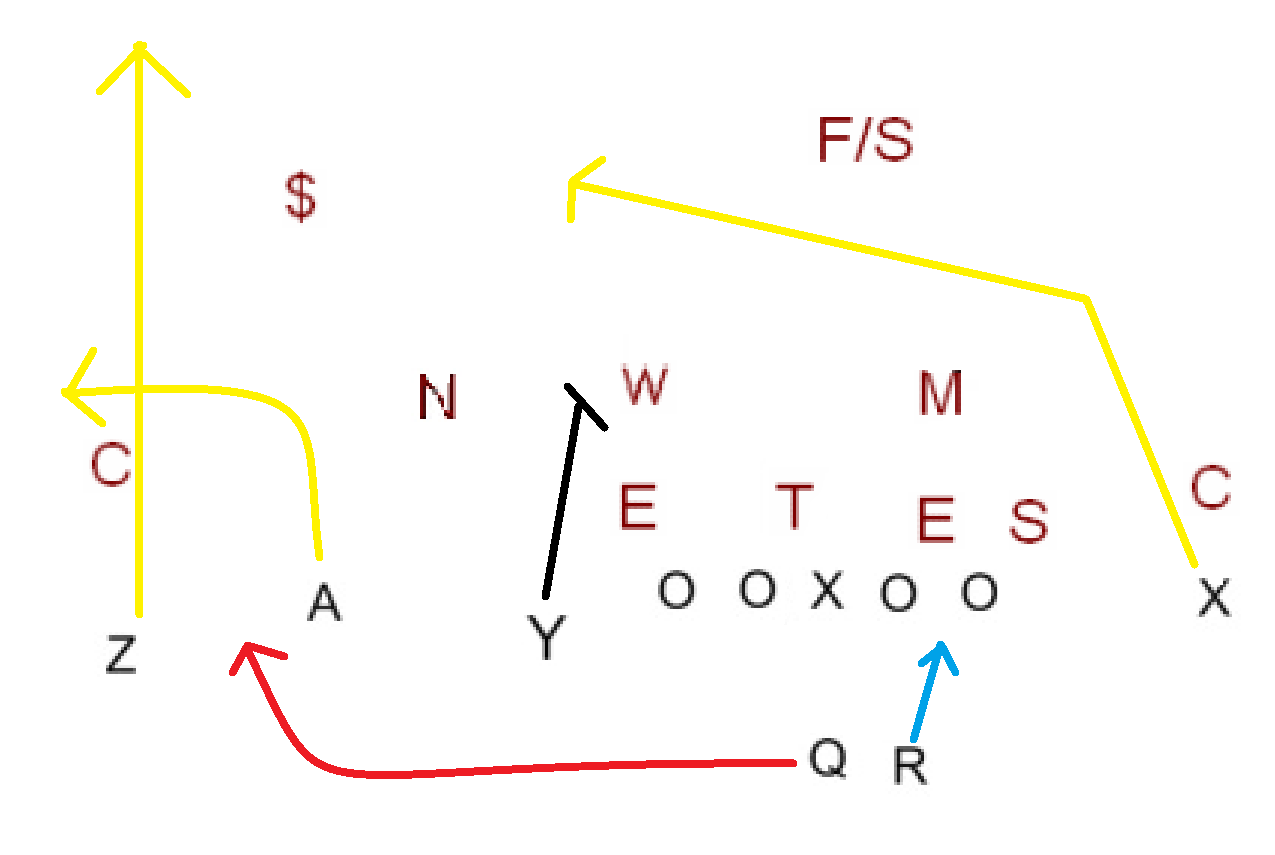No. 14 Stanford gutted out a close victory over the Washington Huskies last Saturday, preserving its Pac-12 championship hopes. Washington played the Cardinal tough despite losing NFL quarterback Keith Price, aided by a fast and hard-hitting defense that picked off senior quarterback Kevin Hogan once, nearly intercepted him four more times and recorded a fumble recovery for a touchdown.
Despite numerous hiccups, however, the Cardinal offense ground its way to 20 points. Head coach David Shaw and offensive coordinator Mike Bloomgren turned back the clock for Hogan, feeding him numerous rollouts and quick passes reminiscent of his breakout 2012 season, and Stanford posted its first touchdown with this run-pass option to senior wide receiver Ty Montgomery in the second quarter.

The run-pass option is a play that is run at all levels of football. While it’s most famously used by Wing-T-influenced teams like the Auburn Tigers, Stanford occasionally uses it to threaten the flanks of the defense, and often to great effect. It’s a good play call because it plays to the strengths of Kevin Hogan, one of the better running quarterbacks on the West Coast. It’s an especially good call on third–and-2 in the UW red zone, specifically when opponents assume Stanford will run the ball.
Stanford starts off with a little misdirection, faking a run to the right (blue arrow) to hopefully freeze Washington’s linebackers and safeties. Even if the fake is successful it’ll only buy the Cardinal a few split seconds of time, but the line between touchdowns and busted plays is razor thin, and often a few split seconds is all Stanford will need.
The purpose of the play is simple mathematics – to get four options to the left side of the field, where Washington only has three defenders. Senior wide receiver Devon Cajuste (Z) goes vertical and tries to isolate himself deep against his opposing cornerback. Junior wide receiver Michael Rector (X) runs left from the opposite side of the field to occupy the safeties ($ and F/S), while Montgomery heads to the flat and waits for the ball. Hogan (Q) rolls to the left (red arrow), ready to throw the ball to an open man or run for a first down. If all three receivers are covered, there will likely be no defenders left to tackle him.
And most likely, one of these things will happen, because it’s three defenders against four Stanford players. The play works because it puts the closest Washington defender (N) in a quandary: Does he pursue Montgomery or does he try to tackle Hogan? In the end, he chose to pursue Hogan, and in doing so he left Montgomery – Stanford’s shiftiest playmaker – wide open. Montgomery caught Hogan’s pass and ran to the Washington 10 without being tackled. He proceeded to break three tackles and bull his way to the end zone, giving Stanford a 10-point lead.
It’s possible to stop this play, and stop it cold – and Washington stopped a similar run-pass option elsewhere in the game. The answer is to change the math of the game, bringing four defenders against Stanford’s four threats. (A common way to do this would be to put C on Z, $ on A, N on Q, and F/S on X). But if you ask a safety to specially prepare for a play like this, you make it harder to defend against Stanford’s bread and butter plays – short and intermediate dropback passes, the power run game, and deep play-action passes.
Washington left Montgomery open with nobody within five yards of him. Stanford fans often implore Shaw and Bloomgren to “get the ball to Ty Montgomery” by any means necessary. The All-American Montgomery is unquestionably a special talent, dangerous as a receiver, a rusher and a returner – but Stanford is blessed with a number of fantastic playmakers. With that in mind, if Stanford gets the ball to Montgomery, number 7 has a very good chance to make magic happen. Stanford didn’t need a touchdown on this play – it just needed two yards and the first down. Montgomery’s touchdown was gravy. But after Stanford scored ten points on nine drives into the USC 35 three weeks ago, some offensive success against high-quality competition was very welcome indeed.
Contact Winston Shi at wshi94 ‘at’ Stanford.edu
